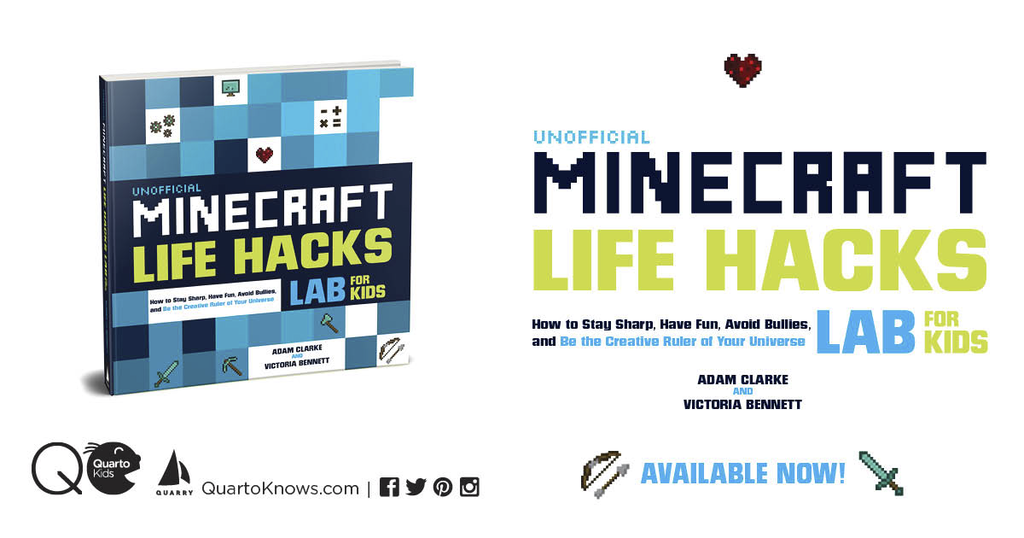Unofficial Minecraft Life Hacks Lab for Kids Review
Four years ago Chris Scott and I were approached by a publisher and asked about writing a Minecraft book. We suggested the idea of combining in-game creative building with out of game activities that were hands-on and supported family time. The result were two books (here and here) that proved to be very popular amongst kids and adults. We are both thrilled to see the series continue with a new book written by our friends Adam Clarke and Victoria Bennett, Unofficial Minecraft Life Hacks Lab for Kids.
Adam and Victoria are two of the most innovative folks working with Minecraft and they have created a book that follows the series theme of combining challenging builds in the game with fun and investigative activities outside the game. The stimulating activities support learning how to be a good citizen and to make the right choices in life. As a history teacher, I also love that they gently nudge players to conduct a bit of research to better support their understanding
The projects are designed to promote positive behavior and digital citizenship and also cover how to set gaming ground rules like conflict resolution and how to work with others. By using gaming principles to help build emotional intelligence, Adam and Victoria provide insight into how games can be used for deep learning and personal growth and reflection.
In the book, players are asked to acquire and then apply skills. For example, they learn how to recognize empathy in themselves by building a “box head buddy” out of paper with each side of the box representing a different feeling or expression. In the game, players spawn a villager and then design and construct an “empathy map” filled with representations of emotions the villager might experience. Other skills acquired throughout the book include those associated with communication, leadership, collaboration, problem solving, self-confidence, and self-control.
In the second half of the book, players are encouraged to tackle projects that ask them to apply the skills they have learned to engage and support their community and for personal growth. In one of my favorites, they have designed a lab to explore intergenerational dialogue. Players interview a senior family member and learn about their life and home growing up. In the game they build the home and share it with the family. In other projects, players tackle the plastics problem and learn how to become agents for change, interview members of their community and build a shared play space, learn how to support a personal cause, build cultural understanding by researching farming practices, and in the final lab, construct a representational self-identity.
Adam and Victoria also infuse the book with informative tidbits from Minecraft designers and educators they know. Joseph Garrett (aka Stampy Cat) relates making a video in Minecraft to traditional filmmaking, Steve Isaacs writes about how he uses Minecraft to teach game design, Kay Gibson provides insight into building a successful team, and Stephen Reid discusses his work developing lessons to help children understand empathy.
It is a fabulous book that demonstrates to those concerned with how video game play may by affecting their children, how well Minecraft can be used to address and integrate so many topics, concepts, and learning objectives through play. I highly recommend this book and I’m looking forward to using many of the labs with my students this coming year and beyond.



